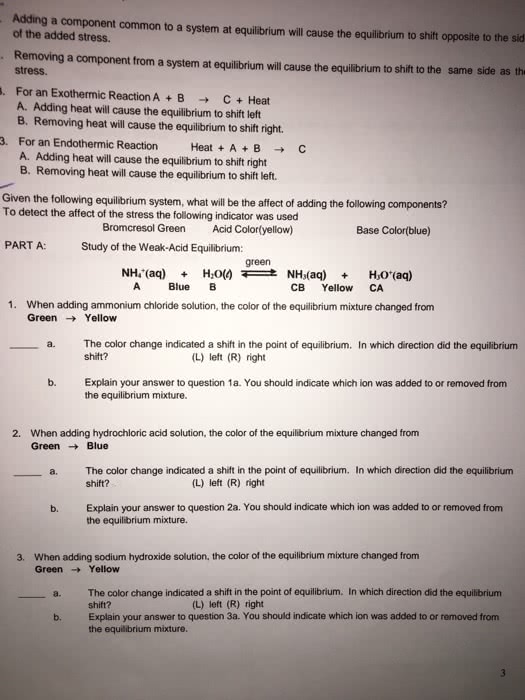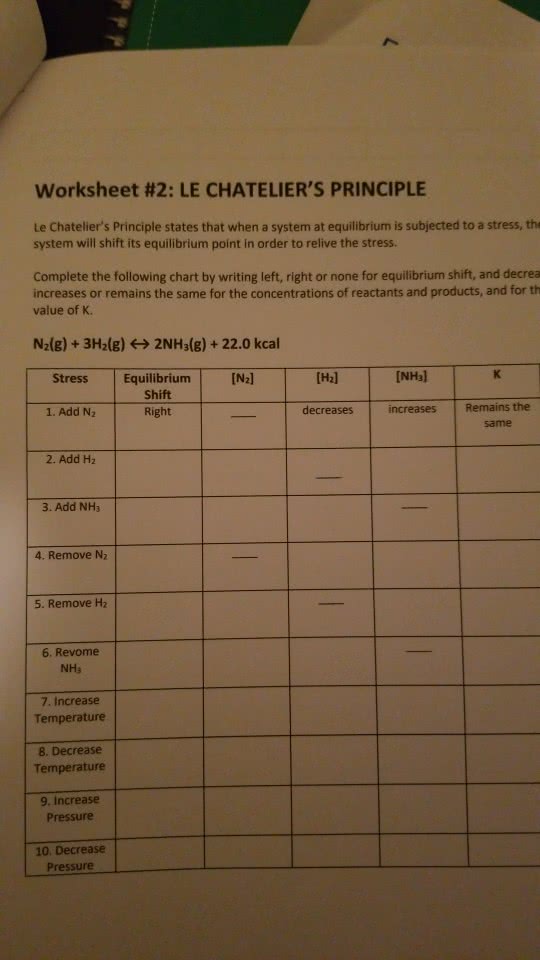CHEM 1002 Study Guide - Quiz Guide: Jmol, Equilibrium Constant, Reaction Quotient
Document Summary
For example, consider the reaction 4 hcl(g) + o2(g) 2 h2o(g) + cl2(g) for which d h = -114 kj/mol. A system of a and b at equilibrium has [a] = 2. 0 m and. Here, we calculate the reaction quotient, q, and compare it to the equilibrium constant: Since q is not the same as keq, the system is not in equilibrium. Since q < keq, q must increase until q = keq. The only way for this to happen is for the equilibrium to shift to the right, increasing [b], and decreasing [a] until [b]2/[a] = 0. 50. The concentrations at equilibrium can be calculated using an ice table: Thus, at equilibrium, the concentrations are [a] = 1. 0 - x and [b] = 0. 5 + 2x. Since there is only one variable, and we have one equation relating the concentrations, this can be solved: [b]2/[a] = keq (0. 5 + 2x)2 / (1. 0 - x) = 0. 50.



